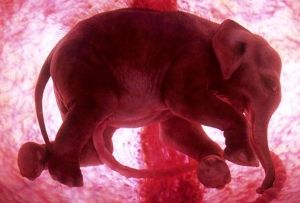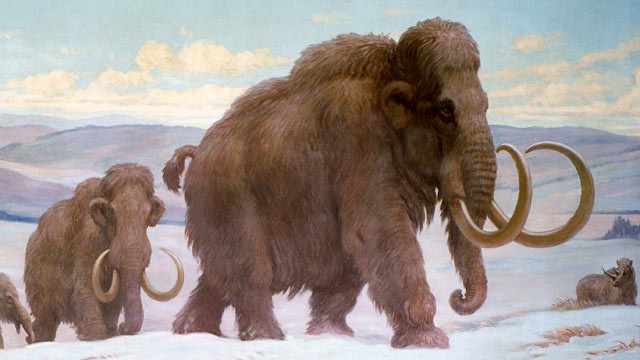A new study of mammoth DNA suggests that mammoths mated outside of their species. Mammoth tissue specimens reveal that woolly mammoths of cold regions in North America bred with temperate climate Columbian mammoths. The news is surprising to me given the social cohesion of mammoth herds. I would have thought that herds would have resisted advances by bull mammoths with distinctive phenomes.
Phys.org sums up the study:
…By using differences in the size and shape of their fossilized teeth, a number of North American mammoth species have been identified. But, some scientists are not confident this method of species categorization tells the whole story.
“Species boundaries can be very blurry. We might find differences in features of the teeth or skeleton that closely correspond to what we think are real species boundaries. But other features may not correspond to those boundaries, suggesting that what we formerly regarded as separate species are in fact not at all,” explains Hendrik Poinar, a Professor at McMaster University in Canada, who co-led the new study with his former graduate student Jake Enk and collaborator Ross MacPhee, a Professor at the American Museum of Natural History.
Professor Poinar and his co-authors used cutting-edge methods to distinguish species of North American mammoths. Tiny samples of fossilized mammoth bone, teeth and faeces, were generously donated by a number of museums across America and Canada. DNA was extracted from these samples in a specialized laboratory of the Ancient DNA centre at the McMaster University, and used to create a family tree of their evolution. The results proved to be very interesting.
North American mammoths such as the Columbian and Woolly Mammoths were historically thought to originate from two separate primitive species. However, this latest DNA analysis agrees with a more recent idea that all North American mammoths originated from a single primitive species, the Steppe Mammoth.
“Individuals of the Woolly and Columbian mammoths look like they represent different species in terms of their molar teeth, but their genetics say that they were not completely separate in the evolutionary sense and could successfully interbreed,” says Professor MacPhee.
Professor Poinar continues, “Mammoths were much better at adapting to new habitats than we first thought—we suspect that subgroups of mammoths evolved to deal with local conditions, but maintained genetic continuity by encountering and potentially interbreeding with each other where their two different habitats met, such as at the edge of glaciers and ice sheets.”
So, while mammoths clearly evolved differences in their physical appearance to deal with different environments, it did not prohibit them from cross-breeding and producing healthy offspring…

